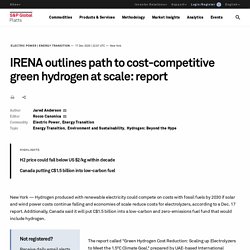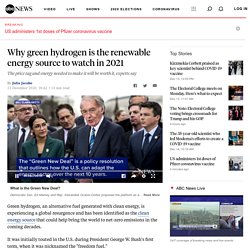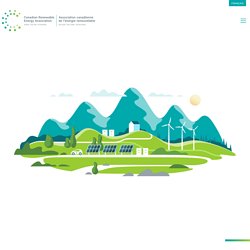

Réservoir Manicouagan : la cour donne raison à Pessamit. Hydro-Québec ne peut rehausser le niveau du réservoir Manicouagan au-delà de 355,95 mètres de hauteur, à moins de recevoir les autorisations nécessaires des ministères concernés.

Ainsi en a décidé la Cour supérieure, qui accueille donc les prétentions du Conseil des Innus de Pessamit, qui s’opposait au rehaussement de cette cote. On se souviendra que dès 2017, Pessamit avait entamé une poursuite contre la société d’État, poursuite qui avait donné lieu à une injonction interlocutoire fixant à 354 mètres la hauteur maximale du réservoir. Dans les faits, le niveau du réservoir derrière le barrage Daniel-Johnson n’a jamais franchi les 354 mètres depuis 1985, soit 35 ans. La cote maximale d’exploitation du barrage est fixée à 359,66 mètres. Dans ce litige, le tribunal avait quelques questions à répondre, dont celle de savoir si le Conseil des Innus de Pessamit avait l’intérêt requis pour entamer une action judiciaire. Stratégie relative à l’hydrogène. Hydrogen Production Is Set To Increase 5000% In Just 5 Years. After decades of stagnation and multiple false dawns, the hydrogen economy appears primed for a major takeoff.

A growing number of countries and industries are proactively investing in hydrogen technologies, with hydrogen being touted as the ‘fuel of the future.’ Meanwhile, industry experts are predicting that hydrogen could become a globally traded energy source, just like oil and gas, while the Bank of America says the industry is at a tipping point and set to explode into a $11 trillion marketplace. For a sector that has been vilified for so long, those bullish projections can appear like a bad case of blue-sky thinking. Yet, they are beginning to take shape right as we watch. And now the private sector is looking to give the EU a run for its money. Why Offshore Wind and Energy Giants are Chasing Off-Grid Green Hydrogen. The European Union wants to build 40 gigawatts of green hydrogen electrolyzers by 2030, and estimates that 80 to 120 gigawatts of solar and wind will be needed to power them.

That’s a fresh headache for Europe’s grid operators. Decarbonization is expected to double the demand for electricity as transport and heat electrify directly as well. Taking hydrogen production off the power grid could be a win-win solution to these problems. That’s the idea behind plans for ‘islanded’ hydrogen, which would pair electrolyzers with offshore wind farms and send hydrogen molecules, rather than electrons, back to shore. The AquaVentus consortium, led by German utility RWE, is exploring the deployment of up to 10 GW of islanded green hydrogen by 2035 with the island of Heligoland as a central hub. AquaVentus dwarves the 4 GW plans in Saudi Arabia, although that project, in the new megacity Neom, plans to be up and running in 2025. L'objectif de carburant d'aviation «vert» de l'Europe pourrait exclure les biocarburants Le producteur occidental.
L'énergie renouvelable, première source d'électricité en 2025 ? IRENA outlines path to cost-competitive green hydrogen at scale: report. Highlights H2 price could fall below US $2/kg within decade Canada putting C$1.5 billion into low-carbon fuel New York — Hydrogen produced with renewable electricity could compete on costs with fossil fuels by 2030 if solar and wind power costs continue falling and economies of scale reduce costs for electrolyzers, according to a Dec. 17 report.

Additionally, Canada said it will put C$1.5 billion into a low-carbon and zero-emissions fuel fund that would include hydrogen. Not registered? Receive daily email alerts, subscriber notes & personalize your experience. Register Now The report called "Green Hydrogen Cost Reduction: Scaling up Electrolyzers to Meet the 1.5⁰C Climate Goal," prepared by UAE-based International Renewable Energy Agency, considers innovation drivers and offers strategies that governments can use to reduce the cost of electrolyzers by 40% in the short term and by up to 80% in the long term, according to an emailed statement.
Battery Pack Prices Cited Below $100/kWh for the First Time in 2020, While Market Average Sits at $137/kWh. BloombergNEF’s annual battery price survey finds prices fell 13% from 2019.

Why green hydrogen is the renewable energy source to watch in 2021. Green hydrogen, an alternative fuel generated with clean energy, is experiencing a global resurgence and has been identified as the clean energy source that could help bring the world to net-zero emissions in the coming decades.

It was initially touted in the U.S. during President George W. Bush's first term, when it was nicknamed the "freedom fuel. " Now, President-elect Joe Biden is promising that the U.S. will be able to access green hydrogen at the same cost as conventional hydrogen within a decade as part of his clean energy plan. Several countries around the world already invest heavily into it, including Chile, Japan, Saudi Arabia, Germany and Australia.
The market for green hydrogen is expected to grow exponentially in the coming decade, experts told ABC News. "It puts the spotlight on [hydrogen] gas for the first time," a study published in Nature in July stated. In addition, the current investment and production are not forecast to keep up with demand. New Federal climate plan is a major step forward on the path to net-zero greenhouse gas emissions - Canadian Renewable Energy Association. New carbon pricing framework provides a clear signal that the time is now to invest in Canada’s renewable energy sector.

Ottawa, December 11, 2020 – The Canadian Renewable Energy Association (CanREA) congratulates the Federal Government on the release today of an enhanced plan to address climate change, “A Healthy Environment and a Healthy Economy.” CanREA views this plan as a major step forward on the path to net-zero greenhouse-gas emissions by 2050. “By making a long-term commitment to regular and transparent increases in Canada’s carbon price, Canada is sending a clear signal to investors in the electricity sector, and across the economy, that the time to invest in low- and no-carbon solutions is now—and that the rate of investment needs to be accelerated,” said Robert Hornung, President and CEO of CanREA. Wind energy and solar energy are the most cost-competitive sources of new electricity generation available in Canada today. Quotes Follow us on Twitter and LinkedIn.